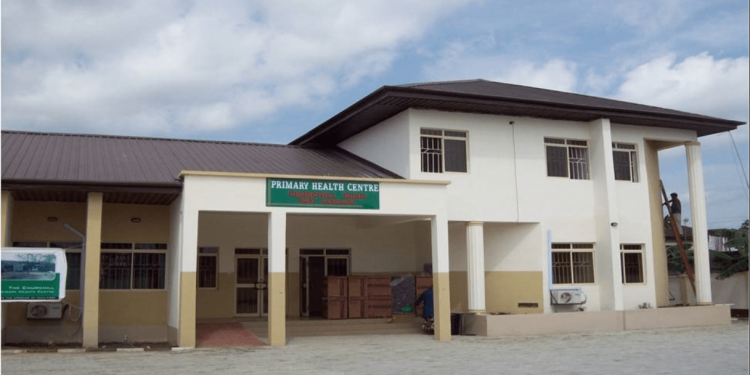More than 43% of Primary Healthcare Centres (PHCs) in Nigeria are not connected to grid electricity;
And of the existing 34,173 health facilities in Nigeria, a measly 20% are functional;
As a result, PHC’s resort to unsafe power sources, inadvertently endangering patients and caregivers to enormous health risks;
The worst hit from the power supply challenges are Nigerian women and children;
With the way things are, the government ought to consider and prioritise renewable energy solutions for health facilities across Nigeria.
Full Story
Nigerians adapt to terrible conditions; a quintessential function of man- resilience. But should you also get accustomed to performing surgery under a candle light, for instance? Sounds like a hyperbole? It isn’t. In a shocking revelation, Dataphyte found that over 43 per cent of Primary Healthcare Centres (PHCs) in Nigeria have no power. And for those connected to the grid, supply of electricity is often less than 5 hours per day. As a result, some PHCs resort to alternatives, unsafe substitutes like kerosene lamps and candles.
These grim revelations were the findings of the Good Governance Team, Nigeria, in their recent report. With support from Heinrich Böll’s Stiftung, Abuja, the report emphasised the need to prioritise policy and legislative actions for optimal basic healthcare services in the country. Also present in the document are recommendations on how to improve Nigeria’s derelict healthcare system.
The importance of electricity in healthcare
Electric power supply is one of the most important considerations in health care delivery. On a surface level, its significance might end in surgeries and operations, but it is so much more. Electricity is vital to late night diagnostics and prescription, not to mention storage of medical supplies.
In fact, some medications and vaccines require cold storage, which depends on power supply. Health facilities also need clean, safe water to run. Where there is no power to pump water (in the few PHCs with water pumping facilities), the next available water source is the go to; an alternative that likely compromises medical protocols. Again, power supply challenges also affect delivery efficiency. How optimal would medical staff be when they’re exhausted from avoidable tasks like fetching water from wells or, even worse, streams? The butterfly effect continues, the dominoes fall.
Then there is the challenge of a pressured workforce. Nigeria can boast of only 34,173 health facilities for its over 200 million population. According to a recent report, less than 6,000 PHCs are functional. That amounts to roughly 20 per cent of the total number of health facilities. And although the sector is riddled with other problems such as an inadequate number of beds amongst others, the power challenge is a priority.
The bane of inadequate power supply in healthcare
The power supply challenge in health facilities across Nigeria is multi dimensional. First there is an outright lack of supply in some facilities. In other scenarios, under-supply or inadequate supply was the challenge. Another challenge is resorting to “unclean”/ dangerous power supply alternatives. By unclean, I mean alternatives that expose both patients and caregivers to different health risks.
First, inadequate power supply affects immunisation coverage and even compromises the quality of administered vaccines. It also reduces the efficiency of health facilities. Medical equipment requiring electricity is often unused as there is no power. Worse, though, most PHCs close before nightfall, as they lack illumination to operate night shifts. Otherwise, they rely on torchlight or kerosene lanterns for critical night-time emergencies. In some health facilities, fossil generators provide alternative power sources; but at what cost? Fossil generators are notoriously harmful to the health of users. The usual suspects include carbon monoxide poisoning, partial or complete loss of hearing, and even lung cancer. Still, care is essential, so patients and caregivers fall victim to these dangerous circumstances. Counterintuitive, some might say, but what choice do they have? But perhaps the most upsetting point is that these fossil generators, the very same death-causing tools, rack up huge maintenance and servicing costs.
Women & kids at the short end of the power stick
Inadequate power supply also exposes caregivers and patients to the risk of physical danger. Owing to poor lighting, they may suffer assault, physical injuries or both. More so, women and children were the key victims, per the report. With women accounting for 65 to 70 per cent of health workers in Nigeria, they feel the most impact of poor power supply. They also suffer the risk of fume poisoning and noise pollution at PHCs besides the obvious security risk from being female. Female patients and children suffer the same plight. And seeing as a majority of women’s health needs require electricity, they become the worst hit from this power crisis. It thus becomes unsurprising, the stat that one in 13 pregnant women dies during childbirth. There’s also the ugly estimate of over 2,300 children under five dying daily in Nigeria.
Sustainability, sustainability, sustainability!
The challenge of inadequate power supply and its aftermath highlights the need for clean, efficient, and sustainable power alternatives in health facilities across Nigeria. While there are ongoing electrification projects, the government needs to turn on the after-burners on these initiatives, ensuring they reach PHCs across the country. Partnership with the private sector could be a starting point in the effort to provide PHCs with alternative power supply. The government can develop a sustainability model in that regard to guide the process.


